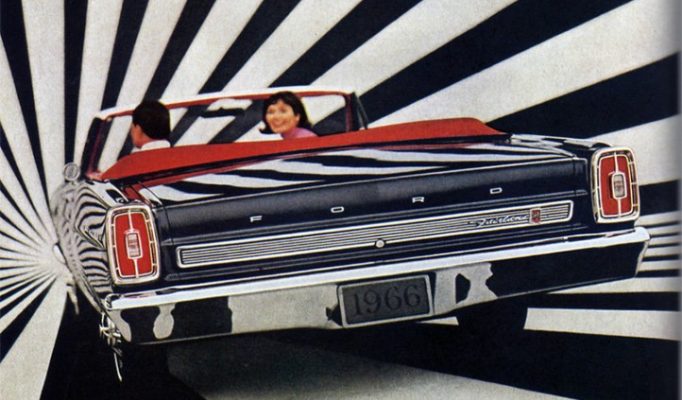Fundamentals of Graphic Design Advertising
Graphic design advertising plays a crucial role in capturing attention and communicating messages effectively to target audiences. It involves the strategic use of visual elements such as color, typography, imagery, and layout to create compelling advertisements that stand out in a competitive marketplace. Understanding the fundamentals of graphic design is essential for developing visual campaigns that not only attract but also engage viewers, ultimately driving brand recognition and sales.
Principles of Design
Fundamentals of graphic design advertising revolve around creating visually compelling messages that capture attention and communicate effectively. Understanding the principles of design is crucial to producing advertisements that resonate with the target audience and convey the intended message clearly.
- Balance: Achieving visual stability by distributing elements evenly or intentionally creating asymmetry for dynamic impact.
- Contrast: Using differences in color, size, shape, or texture to highlight important information and create visual interest.
- Alignment: Ensuring elements are visually connected and organized, leading to a clean and cohesive layout.
- Repetition: Reinforcing branding and consistency by repeating colors, shapes, or other design elements throughout the advertisement.
- Proximity: Grouping related items together to establish relationships and reduce clutter.
- Hierarchy: Organizing elements to guide viewers’ attention to the most important information first.
- Space: Utilizing positive and negative space effectively to prevent overcrowding and improve readability.
Mastering these principles allows designers to create impactful advertisements that not only attract attention but also deliver the intended message efficiently and memorably.
Color Theory and Application
Fundamentals of graphic design advertising revolve around creating visually compelling messages that capture attention and communicate effectively. Understanding core principles such as layout, typography, imagery, and color is essential for designing impactful advertisements. Color theory plays a vital role in influencing emotions, highlighting key elements, and establishing brand identity within an ad.
- Color Theory: This involves studying how colors interact, evoke emotions, and influence perception. Primary colors, complementary colors, and color schemes are used strategically to attract attention and convey specific messages.
- Color Application: Proper application of color enhances readability, directs viewer focus, and reinforces branding. Choosing the right color palette aligns with the target audience and campaign objectives.
- Contrast and Harmony: Effective use of contrasting colors ensures important elements stand out, while harmonious colors create a balanced and aesthetically pleasing composition.
- Psychological Impact: Colors have psychological effects that can influence consumer behavior. For instance, red stimulates excitement, blue evokes trust, and green symbolizes health or eco-friendliness.
Typography in Advertising
Fundamentals of graphic design advertising focus on creating visually appealing and effective messages that capture the audience’s attention. Typography plays a crucial role in this process, as it influences how information is perceived and understood. Well-chosen fonts and typographic arrangements can enhance the overall message, improve clarity, and evoke specific emotions that align with the brand’s identity.
Key aspects of typography in advertising include:
- Font Selection: Choosing appropriate fonts that match the tone and style of the advertisement.
- Hierarchy: Using size, weight, and style to prioritize information and guide the viewer’s eye.
- Legibility: Ensuring that text is easy to read across different devices and formats.
- Spacing: Utilizing kerning, leading, and tracking to improve readability and aesthetic balance.
- Consistency: Maintaining uniform typography to reinforce brand recognition and professionalism.
Visual Hierarchy
In graphic design advertising, visual hierarchy plays a crucial role in guiding the viewer’s attention and conveying the intended message effectively. It involves arranging elements such as images, text, and other visual components in a way that emphasizes the most important information first. A well-crafted visual hierarchy ensures that viewers can quickly identify key messages, understand the overall concept, and engage with the advertisement seamlessly. Techniques used to establish visual hierarchy include variations in size, color, contrast, alignment, and spacing, all of which contribute to directing focus and creating a balanced, cohesive design. Understanding and applying these principles helps advertisers capture attention, communicate value, and influence consumer behavior successfully.
Types of Advertising Graphics
Advertising graphics play a crucial role in capturing audience attention and conveying brand messages effectively. There are various types of advertising graphics, each serving a specific purpose and style, from eye-catching banners to informative infographics. Understanding these different types helps marketers choose the right visual tools to enhance their campaigns and engage consumers successfully.
Digital Ads
In graphic design advertising, the effectiveness of your message often depends on the visual elements used to capture attention and communicate your brand. Different types of advertising graphics serve various purposes and platforms, making it essential to select the right type for your campaign.
- Banner Ads: These are rectangular graphics placed on websites to attract clicks and direct users to a landing page.
- Social Media Graphics: Custom visuals designed specifically for social media platforms to engage users and promote campaigns.
- Display Ads: Visual ads that appear on websites, often combining images and text to communicate the message effectively.
- Video Graphics: Motion visuals used in video advertisements to enhance storytelling and engagement.
- Infographics: Visual representations of data or information that simplify complex concepts and increase shareability.
- Popup and Interstitial Ads: Graphics that overlay on webpage content to grab immediate attention or promote special offers.
- Digital Ads: These encompass a broad range of online advertising formats, including search engine ads, social media ads, and programmatic advertising, utilizing graphic design to attract and convert audiences.
- Banner and Display Advertising: Visual ads that appear across websites, optimized for various screen sizes and devices.
- Native Ads: Graphics seamlessly integrated into content that blend with the surrounding website or platform for a less intrusive experience.
- Retargeting Ads: Personalized graphics shown to users who have previously interacted with your website, reminding them to return or complete a purchase.
- Interactive Ads: Graphics that invite user engagement through clickable elements, animations, or mini-games, enhancing user experience and brand connection.
Print Advertisements
Types of advertising graphics play a crucial role in capturing audience attention and conveying the message effectively. In print advertisements, several graphic design elements are employed to enhance visual appeal and communication. Common types include illustrations, typography, photographs, logos, and layout designs. Illustrations are often used to create eye-catching visuals that evoke emotion or imagination. Typography involves creatively designing text to complement the overall message and branding. Photographs add realism and authenticity to advertisements, making the product or service relatable. Logos serve as recognizable symbols that reinforce brand identity. Layout design organizes these elements in a balanced and aesthetically pleasing manner, guiding the viewer’s eye through the advertisement. Effective use of these graphic types in print ads ensures that the message stands out and resonates with the target audience, ultimately driving engagement and sales.
Billboards and Outdoor Advertising
Advertising graphics play a crucial role in conveying messages effectively and capturing the audience’s attention. Different types of advertising graphics are used across various media to enhance brand visibility and communication. Billboards and outdoor advertising are prominent forms of visual marketing designed to reach a broad audience quickly.
Billboards are large-scale graphics placed in high-traffic areas to maximize exposure. They typically feature bold, eye-catching designs with minimal text to deliver clear messages at a glance. The use of vivid colors, large fonts, and striking imagery helps draw the attention of passersby.
Outdoor advertising includes a range of visual formats such as transit ads on buses and taxis, posters in public spaces, digital signage, and banners in outdoor venues. These graphics often utilize dynamic design elements to create engaging visuals that stand out amidst urban surroundings. The emphasis is on simplicity and visual impact to communicate the core message effectively.
Overall, effective advertising graphics in billboards and outdoor advertising combine strong visual elements with strategic placement to ensure maximum reach and influence within the target audience.
Social Media Graphics
In graphic design advertisement, various types of advertising graphics are used to capture attention and communicate messages effectively. Social media graphics, in particular, play a vital role in engaging audiences across digital platforms and boosting brand visibility.
Types of Advertising Graphics
- Billboards and Outdoor Signage: Large-scale visuals designed to be seen from a distance, promoting products or events.
- Print Advertisements: Include flyers, brochures, magazines, and newspapers with compelling visual layouts.
- Digital Ads: Banner ads, pop-ups, and video ads optimized for online platforms.
- Product Packaging Graphics: Creative designs on packaging that attract consumers and convey brand identity.
- Event Graphics: Banners, backdrops, and signage used in promotional events and exhibitions.
Social Media Graphics
- Instagram Posts and Stories: Visually striking images and videos tailored for engagement on Instagram.
- Facebook Cover Photos and Posts: Custom graphics that enhance brand presence on Facebook.
- Twitter Headers and Tweets: Eye-catching visuals combined with concise messaging.
- LinkedIn Banners and Content: Professional graphics that promote corporate branding and messages.
- Pinterest Pins: High-quality images designed to attract and drive traffic through visual discovery.
Design Tools and Software
Design tools and software are essential resources for creating compelling graphics and visual content that capture attention and communicate ideas effectively. In the realm of graphic design advertising, these tools enable designers to transform concepts into professional, eye-catching visuals. Whether working with digital illustrations, layouts, or branding elements, the right software can streamline the creative process and enhance the overall quality of advertising materials.
Adobe Photoshop
Adobe Photoshop is an essential design tool widely used in the graphic design industry for creating stunning visuals and advertisements. Its powerful features allow designers to manipulate images, add effects, and craft detailed compositions that capture audience attention. With an intuitive interface and extensive capabilities, Photoshop enables the development of high-quality graphics tailored to diverse marketing campaigns. Whether adjusting color schemes, retouching images, or designing layouts, it remains a go-to software for professionals aiming to produce compelling advertisements that stand out in a competitive market.
Adobe Illustrator
Adobe Illustrator is a powerful vector graphic design software widely used by professionals in the advertising industry to create eye-catching advertisements and compelling visual content. Its versatile tools allow designers to craft intricate illustrations, logos, and typography with precision and scalability. With features such as pen tools, shape builder, and advanced coloring options, Illustrator enables the creation of highly detailed and vibrant graphics that enhance brand visibility. Its integration with other Adobe Creative Cloud applications streamlines the workflow, making it an essential tool for producing high-quality graphics for marketing campaigns and promotional materials.
Canva and Online Platforms
Design tools and software such as Canva and various online platforms have revolutionized the way graphic design advertisements are created and shared. Canva offers an intuitive, user-friendly interface that allows both professionals and beginners to craft eye-catching visuals with ease, providing a vast library of templates, images, and fonts. Online platforms enable collaboration, cloud storage, and quick access to design resources, streamlining the creative process. These tools empower marketers and designers to produce high-quality advertisements efficiently, ensuring they stand out in competitive markets. By leveraging such technologies, businesses can enhance their branding efforts and reach audiences more effectively through compelling visual content.
Emerging Technologies in Design
In the realm of graphic design advertisement, the use of advanced design tools and software plays a crucial role in creating compelling visual content. Programs like Adobe Photoshop, Illustrator, and InDesign are industry standards for crafting professional and eye-catching designs. These tools offer a wide array of features that enable designers to manipulate images, develop detailed illustrations, and layout advertisements with precision. Additionally, emerging technologies such as augmented reality (AR), virtual reality (VR), and artificial intelligence (AI) are revolutionizing the way designers approach creative processes. These innovations allow for more interactive and personalized advertising experiences, capturing audience attention in new and exciting ways. Staying updated with these technologies ensures that designers can produce innovative and engaging advertisements that stand out in a competitive market.
Creating Effective Advertising Campaigns
Creating effective advertising campaigns through graphic design is essential for capturing audience attention and conveying messages powerfully. Skillful use of visual elements, color schemes, typography, and layout can transform simple ideas into compelling advertisements that resonate with viewers. A well-crafted graphic design not only enhances brand recognition but also drives engagement and results in a successful marketing strategy.
Target Audience Analysis
Creating effective advertising campaigns in graphic design requires a thorough understanding of the target audience to ensure that the message resonates and drives engagement. Analyzing the target audience helps in tailoring visuals, messaging, and overall campaign strategies to meet their preferences and needs.
- Identify demographic details such as age, gender, income level, and education to understand who your audience is.
- Study psychographics including interests, lifestyles, values, and purchasing behaviors to craft relevant visuals and messages.
- Analyze media consumption habits to determine where your audience spends most of their time online or offline, guiding platform selection.
- Gather feedback through surveys, focus groups, or social media interactions to refine your understanding of audience preferences.
- Use analytics tools to track engagement metrics and adjust campaigns accordingly for maximum impact.
Brand Identity and Consistency
Creating effective advertising campaigns through graphic design is essential for establishing a strong brand identity and ensuring consistency across all platforms. A well-designed campaign captures attention, communicates the intended message clearly, and builds recognition that resonates with the target audience.
- Define clear objectives and understand your target audience to tailor your visual elements effectively.
- Develop a cohesive brand identity by selecting consistent colors, typography, and imagery that reflect your brand’s personality.
- Use compelling visuals and concise messaging to create memorable impressions and prompt engagement.
- Maintain consistency across all advertising materials to reinforce brand recognition and trust.
- Incorporate storytelling through graphic elements to forge an emotional connection with viewers.
- Regularly evaluate campaign effectiveness and make adjustments to improve visual impact and message clarity.
Message Clarity and Call to Action
Effective advertising campaigns in graphic design hinge on clear messaging and compelling calls to action. Clarity in your message ensures that viewers quickly understand the value or benefit of your product or service without confusion. Utilizing simple, direct language and visually clean layouts helps convey your message efficiently. A strong call to action guides the audience towards the desired response, whether it’s making a purchase, signing up, or visiting a website. Incorporating bold, contrasting colors and prominent placement for your call to action buttons or text increases visibility and drives engagement. Overall, a well-crafted graphic design advertisement combines visual appeal with clear communication to maximize its impact and achieve your marketing goals.
Integrating Visuals and Copy
Creating effective advertising campaigns through graphic design involves a strategic balance of compelling visuals and persuasive copy. The visuals should capture attention immediately, using eye-catching colors, clear imagery, and cohesive layout to communicate the core message. Simultaneously, the copy must be concise, impactful, and aligned with the visual elements to reinforce the campaign’s purpose. Integrating visuals and copy seamlessly ensures that viewers are engaged and quickly understand the intended message, making the advertisement memorable and effective.
Trends in Graphic Design Advertising

Graphic design advertising is constantly evolving, reflecting changes in technology, consumer preferences, and cultural trends. Recent developments highlight the shift towards minimalism, bold typography, and immersive visuals that capture audience attention quickly. As brands seek to stand out in a crowded marketplace, innovative design strategies are becoming essential for effective advertising campaigns. Understanding these emerging trends can help designers create compelling and memorable advertisements that resonate with modern audiences.
Minimalism and Simplicity
Trends in graphic design advertising continue to evolve, with minimalism and simplicity leading the way. Advertisers increasingly favor clean, uncluttered visuals that convey messages quickly and effectively. Minimalist designs emphasize essential elements, making brand messages more memorable and easier to understand. This approach not only enhances aesthetic appeal but also improves user engagement by reducing visual noise. As digital platforms dominate marketing strategies, simple and elegant graphics stand out, capturing attention amidst the clutter. Overall, the focus on minimalism in advertising helps brands communicate more clearly, fostering stronger connections with their audience.
Motion Graphics and Animation
Recent trends in graphic design advertising highlight a dynamic shift towards minimalism and bold visual statements, emphasizing clean lines and striking color palettes to capture audience attention. Motion graphics and animation are increasingly integrated to create engaging storytelling, making advertisements more interactive and memorable. The use of 3D elements and immersive experiences are on the rise, providing a sense of depth and realism that elevates brand messaging. Additionally, there is a growing focus on personalization and data-driven designs, allowing brands to deliver targeted content that resonates with specific audiences. As technology advances, designers are leveraging augmented reality and interactive platforms to push creative boundaries and enhance user engagement.
Interactive and Responsive Design
Recent trends in graphic design advertising emphasize the importance of interactive and responsive design to engage audiences effectively. As digital platforms diversify, advertisers focus on creating visually compelling content that adapts seamlessly across various devices and screen sizes. The integration of user interaction and responsiveness not only enhances user experience but also boosts brand visibility and customer engagement.
- Use of bold, eye-catching visuals combined with minimalistic typography to grab attention quickly.
- Implementation of responsive layouts that ensure advertisements look and function well on desktops, tablets, and smartphones.
- Incorporation of interactive elements such as clickable banners, animations, and videos to foster user participation.
- Adoption of augmented reality (AR) and virtual reality (VR) components to create immersive advertising experiences.
- Utilization of data-driven design to personalize advertisements based on user behavior and preferences.
- Responsive design frameworks like Flexbox and Grid to develop adaptable and flexible ad components.
- Emphasis on fast-loading, lightweight graphics to maintain performance without sacrificing visual quality.
Sustainable and Ethical Design Practices
Trends in graphic design advertising are continually evolving, reflecting broader cultural and technological shifts. Currently, there’s a strong emphasis on minimalism and bold visuals that capture attention quickly. Incorporating vibrant colors, dynamic typography, and immersive layouts helps brands stand out in a crowded marketplace. Additionally, the rise of motion graphics and interactive elements enhances user engagement, making advertisements more compelling and memorable.
Sustainable and ethical design practices are becoming essential components of modern advertising strategies. Many brands prioritize eco-friendly materials and digital solutions to reduce their environmental impact. Ethical considerations include transparency, diversity, and social responsibility, which resonate with consumers seeking authentic and conscientious brands. Incorporating these principles not only improves brand reputation but also contributes to a more sustainable and inclusive advertising landscape.
Legal and Ethical Considerations
Legal and ethical considerations play a crucial role in the creation of graphic design advertisements. By understanding and adhering to these principles, designers can ensure that their work is both responsible and respectful of legal standards. Navigating issues such as intellectual property rights, truthfulness in advertising, and cultural sensitivity helps maintain integrity and credibility within the industry. Properly addressing these considerations not only safeguards the designer and client but also promotes ethical practices that benefit consumers and society at large.
Copyright and Intellectual Property
Legal and ethical considerations play a crucial role in graphic design advertising, ensuring that creators respect intellectual property rights and maintain integrity in their work. It is essential for designers to understand copyright laws to avoid unauthorized use of images, fonts, and other creative assets, which can lead to legal disputes and financial penalties. Ethical practices include giving proper credit to original artists and sources, as well as avoiding false advertising or misleading visuals that could deceive consumers. Upholding these standards not only protects the designer and client but also fosters trust and credibility in the marketplace. Ultimately, respecting intellectual property rights and adhering to legal and ethical guidelines contribute to a responsible and sustainable advertising industry.
Authenticity and Truthfulness in Advertising
In graphic design advertising, maintaining legal and ethical standards is crucial to build trust and credibility with consumers. Ensuring that all claims are truthful and supported by evidence protects both the designer and the client from potential legal issues. Ethical advertising also involves avoiding misleading visuals or messages that could deceive consumers, thereby fostering a transparent relationship with the audience.
Authenticity and truthfulness are vital components in graphic design advertising as they reinforce the brand’s integrity and reliability. When visuals accurately represent the product or service being promoted, it not only enhances consumer trust but also reduces the risk of legal repercussions related to false advertising. Ethical graphic designers prioritize honesty in their creative work, ensuring that designs reflect the true qualities and benefits of the offerings without exaggeration or deception.
Accessibility and Inclusivity
In graphic design advertising, addressing legal and ethical considerations is essential to ensure that campaigns are both compliant with laws and respectful of societal standards. Designers must avoid false advertising, plagiarism, and the use of copyrighted material without permission, which can lead to legal repercussions. Ethically, it is important to promote honesty, transparency, and respect for diversity in messaging and imagery.
Accessibility and inclusivity play a crucial role in creating effective advertisements that reach diverse audiences. Inclusive designs consider various factors such as color contrast for those with visual impairments, clear typography for readability, and content that avoids stereotypes or offensive stereotypes. By prioritizing accessible and inclusive practices, graphic designers can foster a more equitable space where all individuals feel represented and can engage with the advertisement meaningfully.





